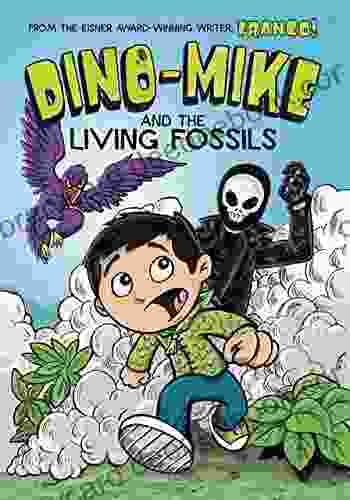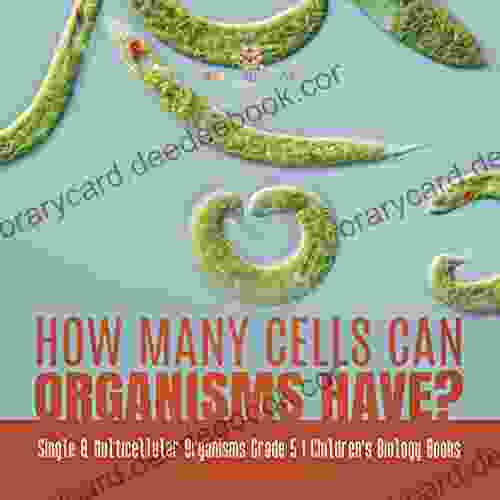How Many Cells Can Organisms Have: Single vs. Multicellular Organisms for Curious Young Minds

The world around us is teeming with life, from the smallest bacteria to the largest blue whales. All living organisms are made up of cells, the basic building blocks of life. But how many cells do organisms have? And how does the number of cells affect the organism's complexity and function? In this article, we will explore the fascinating world of cells and answer these intriguing questions for curious young minds.
Single-celled Organisms: A World of Their Own
Imagine a world where every living creature is made up of just one cell. That's the world of single-celled organisms, also known as unicellular organisms. These tiny beings, ranging in size from a few micrometers to a few millimeters, are prokaryotic or eukaryotic. Prokaryotic cells lack a nucleus and other membrane-bound organelles, while eukaryotic cells have a nucleus and other specialized structures within their cytoplasm.
4.3 out of 5
| Language | : | English |
| File size | : | 23807 KB |
| Screen Reader | : | Supported |
| Print length | : | 72 pages |
Examples of single-celled organisms include bacteria, which can be found in almost every environment on Earth. Bacteria play crucial roles in nutrient cycling, decomposition, and even human health. Amoebas, another type of single-celled organism, are fascinating creatures that move and feed by extending their cytoplasm. And paramecia, with their hair-like cilia, are equally intriguing, swimming gracefully through water droplets.
Multicellular Organisms: A Symphony of Cells
In contrast to single-celled organisms, multicellular organisms are made up of many cells that work together to form a complex body. Multicellular organisms can range in size from tiny worms to towering trees. Amazingly, the human body alone is composed of trillions of cells.
Multicellular organisms have evolved a remarkable level of organization. Cells specialize in different functions, forming tissues, organs, and organ systems. For example, muscle cells contract to enable movement, nerve cells transmit electrical signals to coordinate body functions, and digestive cells break down food into nutrients.
How Many Cells Can Organisms Have?
The number of cells in an organism varies greatly depending on its size and complexity. Single-celled organisms typically have one to a few hundred cells. Multicellular organisms, on the other hand, can have anywhere from a few thousand to trillions of cells.
The number of cells in an organism is not necessarily indicative of its complexity. For example, some bacteria, which are single-celled organisms, can exhibit complex behaviors and adaptations. On the other hand, some multicellular organisms, such as sponges, have a relatively simple body structure and organization.
The world of cells is vast and fascinating, filled with organisms ranging from the microscopic to the colossal. Single-celled organisms, with their remarkable abilities and simplicity, represent the foundation of life's diversity. Multicellular organisms, with their intricate organization and specialized cells, showcase the wonders of evolution.
Understanding the number of cells in an organism provides insights into its complexity and function. Whether it's a single-celled bacterium thriving in extreme environments or a multicellular human with its trillions of cells, every organism is a testament to the beauty and diversity of life on our planet.
4.3 out of 5
| Language | : | English |
| File size | : | 23807 KB |
| Screen Reader | : | Supported |
| Print length | : | 72 pages |
Do you want to contribute by writing guest posts on this blog?
Please contact us and send us a resume of previous articles that you have written.
 Book
Book Novel
Novel Page
Page Chapter
Chapter Genre
Genre Reader
Reader Paperback
Paperback E-book
E-book Sentence
Sentence Bookmark
Bookmark Glossary
Glossary Bibliography
Bibliography Foreword
Foreword Preface
Preface Scroll
Scroll Codex
Codex Bestseller
Bestseller Library card
Library card Narrative
Narrative Biography
Biography Autobiography
Autobiography Encyclopedia
Encyclopedia Dictionary
Dictionary Narrator
Narrator Librarian
Librarian Card Catalog
Card Catalog Archives
Archives Research
Research Lending
Lending Academic
Academic Journals
Journals Special Collections
Special Collections Literacy
Literacy Study Group
Study Group Thesis
Thesis Dissertation
Dissertation Storytelling
Storytelling Awards
Awards Reading List
Reading List Book Club
Book Club Souvik Bhattacharyya
Souvik Bhattacharyya Daniel Goleman
Daniel Goleman Steven Pifer
Steven Pifer Clive Gifford
Clive Gifford Elsie Lincoln Benedict
Elsie Lincoln Benedict Li M Chen
Li M Chen Ronnie Ann Ryan
Ronnie Ann Ryan Stacy West
Stacy West Kem Nunn
Kem Nunn Luca R Joahnson
Luca R Joahnson Marty Stuart
Marty Stuart Arya White
Arya White Jon Liebman
Jon Liebman Cynthia Luhrs
Cynthia Luhrs Sean Vigneau Britt
Sean Vigneau Britt L Frank Baum
L Frank Baum Susanne Gervay
Susanne Gervay Alison Crosthwaite
Alison Crosthwaite Debra Valencia
Debra Valencia Dora Wilson Jefferson
Dora Wilson Jefferson
Light bulbAdvertise smarter! Our strategic ad space ensures maximum exposure. Reserve your spot today!
 Dalton FosterFollow ·7k
Dalton FosterFollow ·7k Isaiah PowellFollow ·10.9k
Isaiah PowellFollow ·10.9k Abe MitchellFollow ·17.5k
Abe MitchellFollow ·17.5k Felix HayesFollow ·4k
Felix HayesFollow ·4k Cole PowellFollow ·10.8k
Cole PowellFollow ·10.8k Rubén DaríoFollow ·12k
Rubén DaríoFollow ·12k Felix CarterFollow ·9k
Felix CarterFollow ·9k Anton ChekhovFollow ·8.5k
Anton ChekhovFollow ·8.5k

 Braden Ward
Braden WardPopular Classical Carols of All Time for Beginner Trumpet...
Christmas is a time...

 Galen Powell
Galen PowellDark Secrets Unraveled: Exploring the Enigmatic Dark 15
In the depths of the...

 Michael Chabon
Michael ChabonDino Mike and the Living Fossils: Unlocking the Secrets...
In a world teeming...

 Henry Green
Henry GreenThe Enchanting World of Jeevan: A Journey Through the...
In the realm of children's...

 Kirk Hayes
Kirk HayesWho Did It First: A Comprehensive History of Human...
Innovation is the...
4.3 out of 5
| Language | : | English |
| File size | : | 23807 KB |
| Screen Reader | : | Supported |
| Print length | : | 72 pages |














